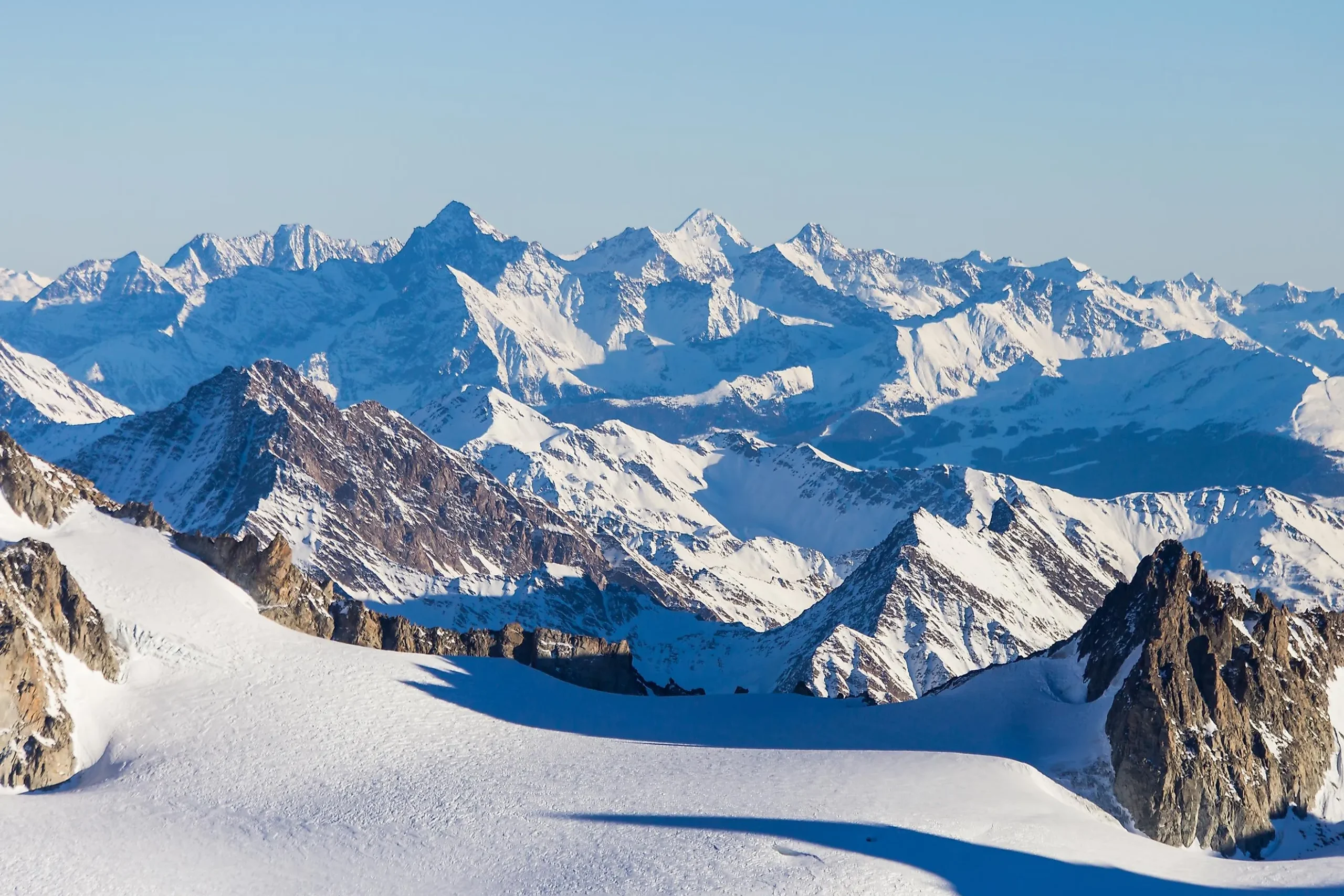Skiing is a popular winter recreational activity enjoyed by millions worldwide.
However, with growing awareness of climate change and environmental sustainability, many are questioning if skiing is bad for the environment.
In this article, we’ll examine the impacts of skiing on greenhouse gas emissions, land use, wildlife, and more.
Is Skiing Bad for the Environment?
Yes, skiing does have negative environmental impacts that contribute significantly to issues like climate change, habitat destruction, and pollution.
But strides are being made across the industry to operate more sustainably.
Key Points:
- Ski resort operations produce substantial greenhouse gas emissions that exacerbate climate change.
- Constructing ski resort infrastructure disturbs wildlife habitat and fragile alpine ecosystems.
- Skiing relies on consistent winter weather and snowpack that is becoming less dependable globally due to rising temperatures.
Does Skiing Contribute to Climate Change?
The ski industry relies heavily on consistent winter weather and snowpack, but climate change threatens the viability of many resorts.
At the same time, ski resort operations exacerbate global warming through substantial greenhouse gas emissions.
Artificial snowmaking, ski lift energy use, lodging, transportation, and infrastructure development all contribute to the carbon footprint of skiing.
One study found that a medium-sized ski resort in the European Alps generates over 10,000 tons of CO2 equivalent per season.
Snowmaking allows resorts to operate even when natural snow is insufficient, but it is energy-intensive, requiring water pumps and snow cannons.
Older snow cannons are particularly inefficient, converting just 20-30% of energy into snow production.
Newer fan guns convert 90% of their energy use into snow.
Lift operations and grooming activities also burn large amounts of fossil fuels.
Most resorts use diesel or gasoline-powered snowcats for grooming and rely on nonrenewable energy to power ski lifts.
Meanwhile, the emissions associated with visitor transportation and lodging can equal or exceed those from ski resort operations.
People often drive long distances or fly to ski destinations, further contributing to the carbon footprint.
Does Skiing Impact Land and Wildlife?
In addition to emissions, the construction and operation of ski resorts can damage fragile alpine environments.
Developing ski runs and infrastructure requires clearing forests and grading land in mountainous terrain.
This earthmoving disturbs wildlife habitat and leads to erosion and decreased stability.
The maintenance required to operate a ski hill also threatens local ecosystems.
Snowmaking withdraws large volumes of water, which can deplete streams and aquatic habitats.
The use of artificial snow, which contains chemicals and additives, may infiltrate groundwater and affect water quality.
Grooming activities and ski trail use cause soil compaction, reducing infiltration and vegetation growth.
Furthermore, increased human activity on the slopes can bother wildlife, like elk, that inhabit alpine regions.
The influx of visitors raises noise levels and adds substantial foot and vehicle traffic.
How Do Ski Resorts Affect Local Communities?
While ski resorts stimulate local economic activity during winter, their environmental impacts can also negatively affect communities.
Land development reduces green space available for public recreation and deprives indigenous groups of ancestral territory.
Intensive water usage for snowmaking can reduce community supplies during seasons of drought or scarcity.
Runoff and erosion from slopes decrease water quality, while local air pollution from idling vehicles diminishes air quality.
These environmental burdens disproportionately affect marginalized groups and future generations unable to weigh in on development decisions.
Can Skiing Become More Sustainable?
Yes, ski resorts and individuals can take steps to reduce the environmental harms associated with downhill skiing.
Many resorts now integrate sustainability into construction plans, operations, and marketing.
For instance, some resorts have installed renewable energy systems to power facilities and lifts.
Stricter grooming protocols and fuel-efficient snowcats also decrease emissions and pollution.
Limiting trail expansion preserves green space and sensitive habitats.
Meanwhile, upgraded snowmaking systems maximize output while conserving water and energy.
Skiers can also reduce their impact by utilizing public transit to resorts, minimizing idling time, recycling, and supporting eco-certified hills.
Carpooling, staying in eco-lodging, limiting airplane travel to ski destinations, and traveling lighter also help lower carbon footprints.
Ultimately, transitioning to renewable energy, limiting development, protecting ecosystems, and reducing consumption remain key to ensuring skiing has a place in a low-carbon future.
What Are the Impacts on Fresh Powder Regions?
Some of the world’s most prized ski destinations, like the Alps and Rockies, are suffering the effects of climate change more acutely.
Warmer winters with less natural snowpack threaten their viability and local economies.
Across the European Alps, snow reliability has declined up to 60% at lower elevations in the last 50 years.
To maintain operations, snowmaking has increased substantially.
But this strain limited water resources, with some streams nearly dried up from overuse during dry winters.
In the Rockies, earlier snowmelt and warmer springs reduce crucial late-season snowpack.
This shrinks the effective winter recreation season that mountain communities rely on.
Drier conditions also increase the risk of devastating wildfires across the western United States.
Meanwhile, thawing permafrost destabilizes infrastructure and landforms, requiring costly ongoing maintenance.
Melting glaciers affect hydrology patterns and increase hazards like landslides or avalanches.
These impacts severely threaten robust mountain ecosystems and the vibrant economies sustained by outdoor recreation.
Urgent climate action and mitigation practices can help protect these iconic regions.
How Does Deforestation From Ski Resorts Affect the Environment?
Clearing forests to create ski trails and infrastructure contributes to deforestation with numerous ecological consequences.
Tree removal reduces habitat for wildlife, threatens biodiversity, and decreases carbon sequestration from vegetation.
It also impacts watersheds and landscape stability.
Tree roots anchor the soil, reducing erosion.
Their foliage provides canopy cover to maintain moisture and soil cohesion.
Without this protection, cleared land is much more susceptible to landslides.
Tree cover removal also affects the snowpack itself.
Snow accumulation and melt rates depend heavily on surrounding vegetation.
Open terrain without forests experiences greater reflectivity, faster melting, and increased sublimation compared to forested regions.
Ultimately, deforestation from ski resort development heightens debris flow hazards, habitat loss, greenhouse gas emissions, and impacts on the hydrologic cycle.
Responsible planning, like selectively thinning forests rather than wide-scale clearing, can help mitigate these risks.
Do Ski Resorts Use Renewable Energy?
Many ski resorts are transitioning from fossil fuels to renewable energy sources like solar, wind, and hydropower.
These technologies help reduce greenhouse gas emissions and dependence on non-renewable fuels.
For instance, Squaw Valley installed a 753 kW solar system, which provides up to 20% of the ski resort’s peak energy demand.
Sugarloaf in Maine utilizes wind power and offsets 100% of its energy use.
Many resorts supplement daytime solar power with nighttime hydropower.
Installing on-site renewables allows ski hills to avoid transmission losses associated with grid power.
Renewable systems can also provide backup resilience if storms or disasters damage the main electric grid.
However, on-site renewables may not eliminate fossil fuel use, as many resorts still rely on diesel generators as a backup.
Continuing to improve energy efficiency and supply flexibility helps maximize sustainability.
What Role Does Ski Equipment Play in Environmental Impact?
Beyond ski resort operations, the production, use, and disposal of ski gear and apparel also affect the environment.
Materials, manufacturing, and packaging contribute to pollution and waste.
Most ski gear contains plastics and petroleum-based materials with substantial carbon footprints.
For example, epoxy resins in snowboards and polyurethane foams in ski boots require significant energy to produce.
Some companies now offer eco-friendly gear made from renewable materials like bamboo or sugarcane.
Others use recycled metals and plastics to reduce waste.
Consumers can select equipment with the lowest impact and recycle old gear responsibly.
Routine waxing and tuning of ski and snowboard bases also utilize non-renewable petroleum products.
Alternative plant-based waxes are available but can be costly.
Using wax sparingly, participating in reuse programs, and recycling help lower waste.
How Do Ski Resorts Recycle and Limit Waste?
To reduce waste, many resorts now recycle paper, glass, cans, and plastics.
Comprehensive zero-waste policies target waste diversion rates above 80%.
For example, Squaw Valley diverts over 60% of its total waste from landfills through extensive recycling and composting programs.
Recycling bins are conveniently placed throughout resort facilities.
Other resorts, like Utah’s Park City Mountain, have banned single-use plastics, straws, and bags.
Some resorts convert food waste into compost or energy generation.
They donate unused food to local charities and minimize packaging waste from retailers and restaurants on-site.
To curb landfilled waste from visitors, resorts also provide rentals for reusable gear and promote end-of-season recycling drives.
These system-wide efforts have substantially reduced waste while cutting costs and improving sustainability.
Continued improvement of recycling and composting programs can further progress toward zero waste goals.
Can Skiing Become More Sustainable?
Yes, ski resorts and individuals can take steps to reduce the climate and environmental impacts associated with downhill skiing.
On the operations side, many resorts now utilize renewable energy, improve snowmaking and grooming efficiency, limit trail expansions, and upgrade to high-efficiency snowmaking systems.
Skiers can reduce their footprint by carpooling, choosing eco-certified resorts, minimizing flights for ski trips, staying in eco-lodging, going wax-free, and recycling their old gear.
Further opportunities exist around expanding renewable energy, enacting stricter emissions regulations, protecting sensitive alpine habitats, investing in eco-friendly infrastructure, limiting development, incentivizing sustainable visitor behavior, and transitioning toward zero-waste, circular business models.
However, reducing consumption, air travel and transportation overall remain key to aligning skiing with low-carbon futures.
Is Skiing a Sustainable Activity?
Skiing will always rely on consistent winter weather and snowpack that is becoming less dependable due to climate change.
From a sustainability perspective, skiing currently contributes significantly to environmental issues like pollution, habitat destruction, and global warming.
However, many resorts and individuals are taking proactive steps to reduce skiing’s footprint through renewable energy, waste minimization, forest protection, and responsible development.
While work remains to improve skiing’s alignment with sustainability principles, these efforts provide optimism that the beloved pastime can retain a place even as society transitions to a low-carbon future.
With conscious planning and innovation, the ski industry could potentially thrive for generations while acting as a steward rather than a detriment to fragile alpine environments.
But this requires accelerated and expanded commitment to environmental stewardship across all facets of skiing.
FAQ:
How Does Skiing Impact Freshwater Resources?
Snowmaking withdraws large volumes of freshwater, which can deplete streams and groundwater reserves. The chemicals used in artificial snow also may leach into waterways, degrading quality. Erosion from slopes causes sedimentation problems in rivers and lakes.
What Are Some Ways Skiers Can Reduce Their Footprint?
Skiers can use public transit, carpool, choose eco-lodging, reduce flights for ski trips, pack light, go wax-free, and recycle gear instead of landfilling. Supporting eco-certified resorts and those using renewable energy also helps.
How Do Rising Temperatures Affect Skiing?
Warmer winters reduce natural snowpack levels and shorten winter sports seasons that mountain towns depend on economically. This threatens the winter tourism industry. Resorts have to make more artificial snow, further taxing limited water resources.
GreenChiCafe is passionate about the environment and our natural world. Please check out our website for more content on living sustainably.

Annie is a passionate environmental writer and activist. She has been writing about sustainability, conservation, and green living for over 15+ years. Annie is dedicated to raising awareness about environmental issues and providing practical tips for living an eco-friendly lifestyle. When she’s not writing, you can find her volunteering with local environmental organizations, teaching workshops on zero waste living, or exploring nature. Feel free to get in touch with Annie: annie@greenchicafe.com



